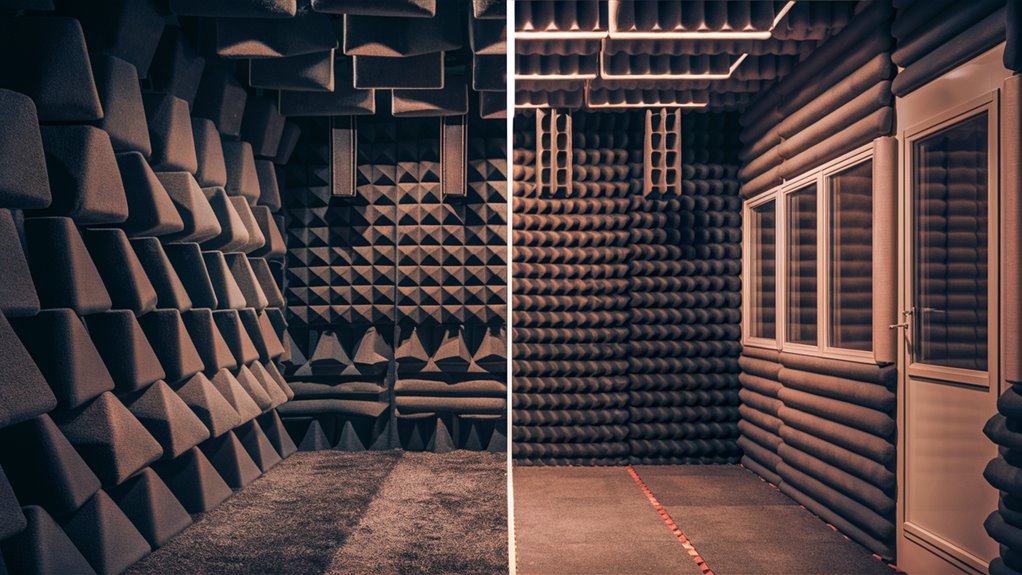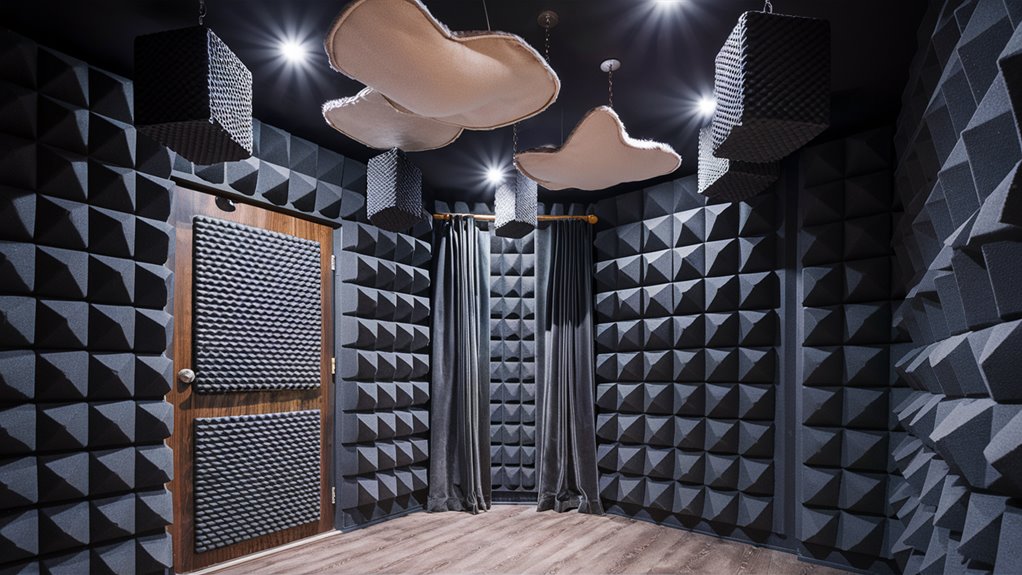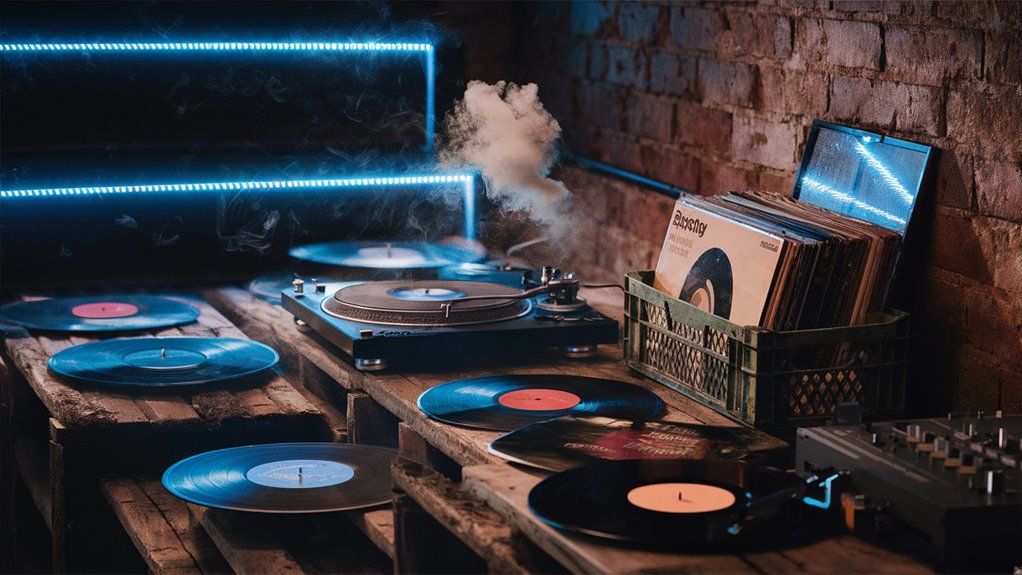Room Sound: Best Way to Stop Noise in Karaoke Spots

Top Noise-Stopping Tricks for Karaoke Rooms
To make the best karaoke room for no noise, you need a full sound fix plan. Use things that block sound and soak it up to make the best sing spot.
Needed Noise Stopping Stuff
- Heavy vinyl walls
- Rock wool for sound
- Thick glass wool boards
New Build Ways
Build walls with two layers, and a 3-inch air space to cut down 45-50dB of sound. Hang sound boards 2-4 inches from walls in a check style for the best sound inside.
Must-Have Sound Fix Bits
Put bass traps in corners and seal doors well with rubber seals to keep all sounds in. Cover wall to roof fully, with 20-25% stuff on the surface for top sound work. These pro sound fixes make a spot stand out and meet high sound needs for great karaoke shows.
How Room Sound Works
Room Sound Basics
How Sound Moves
How sound moves sets the base for good sound fix. Sound https://getwakefield.com/ bounces off stuff, making tough sound moves that change how we hear. When sound hits hard things, they bounce the same way, making echo and more sound that changes the sound in a karaoke room.
Key Sound Bits
How Sound Moves
Sounds move through both air and things, making bits that move through walls, ground, and roof. We need a full sound fix that looks at every side.
Sound Kinds
Different sounds act in their own ways in small spots. Deep sounds are hard to hold because they go far, needing a special way to catch them.
How Sound Moves
Sound power goes the easy way, moving through weak spots, splits, and open bits. This needs full sound alone ways and a full seal help.
Sound Check Ways
Doing a full sound test lets you find trouble spots in your area. Test different sound levels and look at how sound bounces off different sides to give you key info for making a good sound fix plan. This full check helps pick the best stuff and put it up for the best sound work.
Needed Noise-Stopping Stuff for Karaoke Rooms
Pro Sound Alone Basics
Vinyl walls with mass (MLV) start a good karaoke room noise stop, giving top sound block through walls and roofs. When you add rock wool for sound, these things make a great sound block system that cuts a lot of noise.
New Sound Fix Ways
Thick glass wool and thick fiber boards in see-through cloth soak up sound in the area. Smart spot fix at first sound bounce points with at least 2-inch thick bits gives best sound control for talk. Bass traps in corners control deep sound bounce and room shakes.
Must-Have Sound Seal Bits
Sound paste and special door sweep plans stop sound from leaks through splits and edges. Double-wall dry wall build with Green Glue gives better sound alone work. Floating ground plans with stand-alone pads stop sound from moving through builds, while hanging roofs using sound-soft hangers finish the full sound fix plan.
Ways to Fix Walls and Roofs
Pro Sound Alone Ways for Walls and Roofs
Must-Have Wall Sound Fix Parts
Mass-loaded vinyl (MLV) starts as the main layer for good sound alone, put right on living walls. Strong air gaps make key sound split ways that stop sound from moving straight through builds.
Multi-Layer Fix Ways
Put in thick rock wool or glass wool (at least 2 inches thick) between air gaps for most sound soak. Use 5/8-inch sound better dry wall like QuietRock as the top block.
Roof Sound Alone Ways
Sound alone clips mixed with strong air gaps start good roof sound alone. Make a drop roof plan with at least 3-inch air space from the main build. Fill empty spots with thick sound stuff and seal all sides with sound paste to stop sound spots.
Key Bits for Top Sound Alone:
- Mass-loaded vinyl walls
- Strong air gap systems
- Thick sound stuff
- Soundproof dry wall answers
- Pro sound seals
Door and Window Fix
Door and Window Sound Fix for Karaoke Rooms

Must Control Sound Points
Doors and windows are main sound weak spots in karaoke room build, letting 50-70% more noise through than normal walls. Strong-core doors start off as the main way for sound fixing, giving better sound block than empty-core kinds.
Pro Door Sound Fixes
Door seals and sweeps are key parts that stop costly air gaps, which could cut sound fixing by up to 50%. Rubber seals and auto door bottoms make an air-tight block, giving the most sound alone. For top sound control, a sound lock room system gives an extra 15-20 decibels of noise cut, making a key sound soft zone.
New Window Fix Ways
Two glass window plans using not-matching glass thick (6mm and 8mm) stops sound wave match and boosts noise cut. Window plugs made from mass-loaded vinyl and sound foam give an extra 25-35 decibels of sound cut. Keep at least 4-inch air space between window glass for best sound block work.
Sound Soak Vs Sound Block: A Full Guide
How Sound Bits Work
Sound block and sound soak are two main but different ways in sound fixing. Sound block stops sound waves from moving through blocks, while sound soak changes sound power to heat through rub within materials.
Smart Fix Ways
Block Ways
Thick stuff like mass-loaded vinyl and stone work as sound stops by bouncing sound waves and stopping move. These materials make strong blocks that keep sound in set spots.
Soak Ways
Soft materials like sound Games and Challenges foam boards, rock wool, and cloth-covered glass wool are great at grabbing sound waves within their build. These materials help fix sound inside by cutting echoes.
Set Sound Fix
Good sound fixing needs a smart mix of both block and soak ways. Sound block stuff put in walls and roofs hold loud sounds, while soak fixes on inside sides control room echoes and bounce. This full way gets both sound hold and top sound work.
Key Differences:
- Sound block looks at stopping move
- Sound soak handles inside sound work
- Combined use makes better sound spots
The smart mix of these ways makes sure spots keep ideal sound spots while stopping sound leaks to near areas.
How to Put Up Sound Boards: Pro Guide
Room Check and Plans
Start with a full room sound check by measuring wall sizes and spotting main sound bounce points. These key spots, where sound waves first bounce off sides, usually happen at ear level on side walls and the roof. Smart board spots in these areas max sound soak power.
Best Board Spots
Set boards in a check style with 2-4 feet gaps between parts. Make different air gaps by putting boards at different deeps to boost soak over many sounds. For best voice sound fix (250Hz-2kHz), put boards 2-4 inches from the wall face.
Putting Ways and Tools
Wall Fix
- Sharp bits for dry wall fix
- Z-clips for stone sides
- Wire hang plans for roof use
Corner Fix
Put in bass traps in room corners to manage deep sound build-up. Get top sound cover by fixing 20-25% of wall face with boards, looking at bounce points across from the main sound start.
Cover Needs
Key fix areas:
- Side wall bounce points
- Roof bounce zones
- Front and back wall faces
- Edge bass build points
Focus fix on first-bounce zones and keep even gaps for set sound soak through the spot.
Testing Your Quiet Spot: A Full Guide
Basic Sound Tests
Start your sound check with a clap test – a key test way. Stand smartly in the room and make sharp, loud claps. Listen well for fast echoes and too much echo, which show possible sound problems.
Sound Level Check
Use a sound level meter app to get exact sound levels. Take many tests:
- Inside the quiet room
- Outside the room sides
- While music plays
- At normal show volumes
Top Sound Checks
Use real-time checks (RTA) for top-grade sound tests. Make pink noise through your sound set and check the sound levels in different room spots. Good sound fix should show:
- Set sound levels between 125Hz and 4kHz
- Small ups and downs in sound levels
- Even checks through the spot
Speech Clear Testing
Do deep speech clear tests to see if sound fixing works:
- Record voice shows at set volumes
- Watch sound move from outside the room
- Look at bass sound hold
- Check for clear words beyond the room
If people outside can hear words well, put in more sound fixes to boost sound alone.


